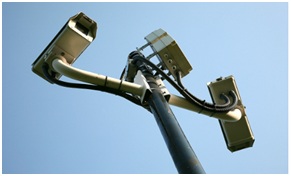The IP security camera market is forecast to exceed $20 billion by 2024, according to a new research report by market research and strategy consulting firm Global Market Insights.
Unit shipments are expected to grow at more than 20% compound annual growth (CAGR) rate from 2017 to 2024. Technological proliferation, ubiquity of internet connectivity and the demand for remote monitoring are expected to drive IP camera market growth over the forecast period, according to the firm.
Advancement in technology such as 4K resolution, edge-based video analytics and penetration of H.265 high-efficiency video encoding is also poised to stimulate demand. The growing number of players in the network camera market and availability of low-cost manufacturing has been fueling the growth across the globe. Global terrorist attacks in recent years have highlighted the need for governments to pay more attention to public security. In addition, the dropping IP camera market price trend has helped shorten the gap with analog systems.
The global IP camera market is marked by trends such as need for high resolution, government investments to improve security infrastructure, reduction in total cost of ownership and rise in demand from non-security applications such as smart home devices.
The growing demand for these systems in non-security applications such as integration with access control systems in smart home automation, e-Point of Sale (POS) terminals, automatic number-plate recognition (ANPR) are poised to offer additional opportunities for the network camera market.
Moreover, other factors such as improved sensor availability, new video analytics capabilities, wider adoption of thermal imaging, mobile access, intelligent building control, 360-degree vision and de-warping are contributing immensely towards penetration of the network camera market, according to the report. IP cameras systems have direct connectivity to the internet, therefore, concern among the public regarding data security and privacy could negatively impact IP camera market growth. In addition, these surveillance market solutions are not only expensive, but also pose risk of being vulnerable to destruction and vandalism, thereby hindering growth in developing regions, the report states.
The IP camera market has been segmented by product into fixed, pan/tilt/zoom (p/t/z) and infrared (IR) systems. Compact design, electronic p/t/z functions, built-in IR sensors, and environmentally resistant structures are trends driving adoption of IP cameras over their analog counterparts. Deployment of a particular type of camera system depends upon the application need, lens type, lighting, cabling systems, power requirements and required resolution.








